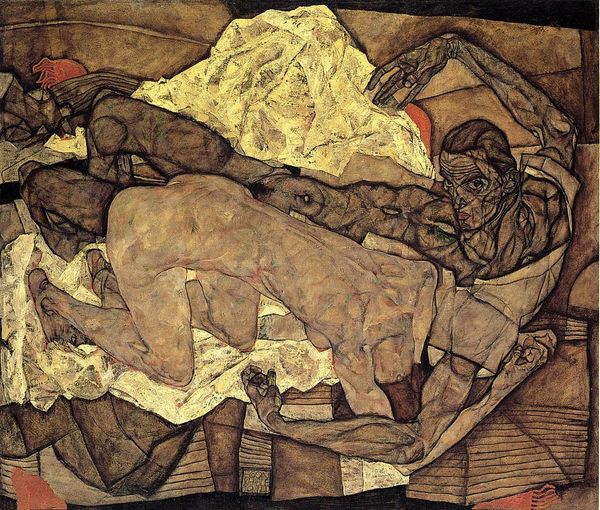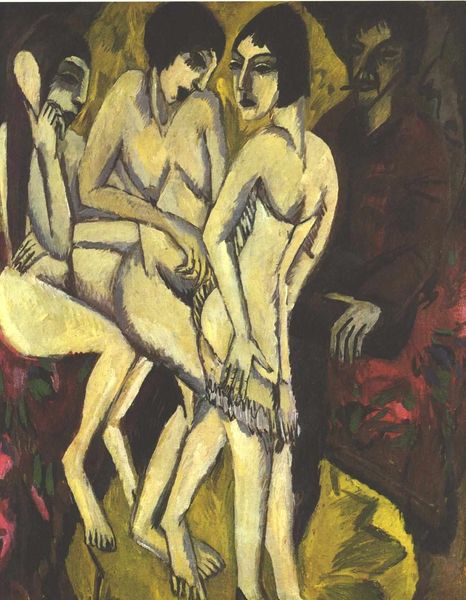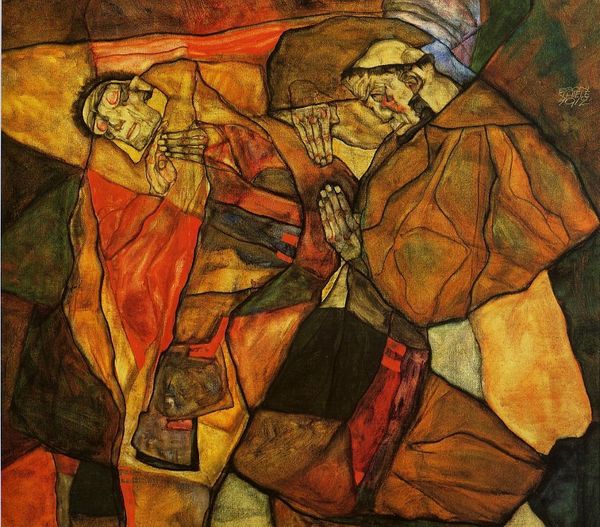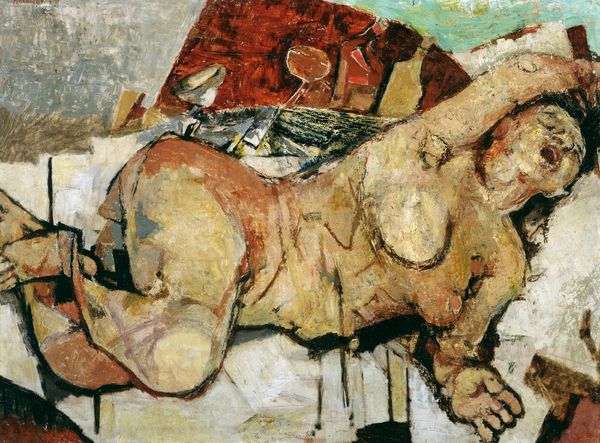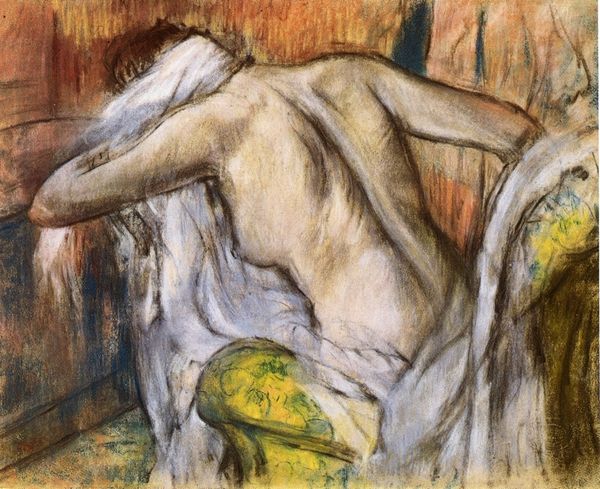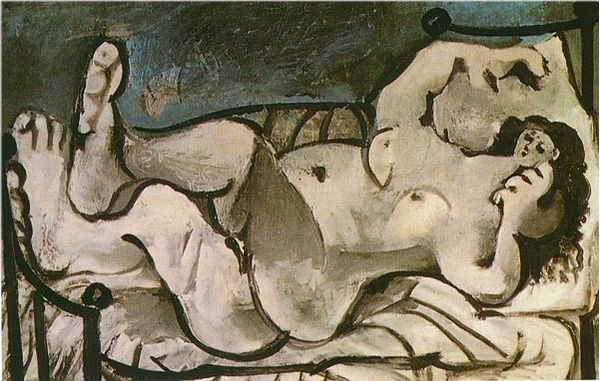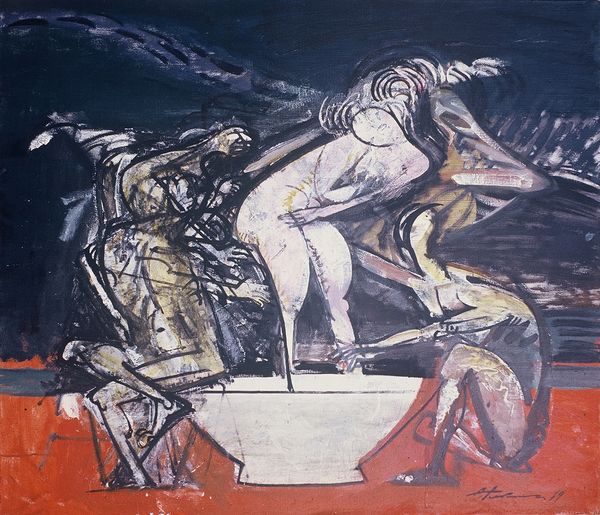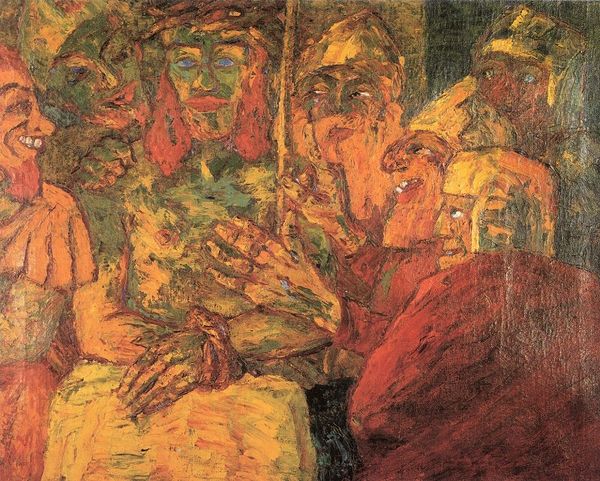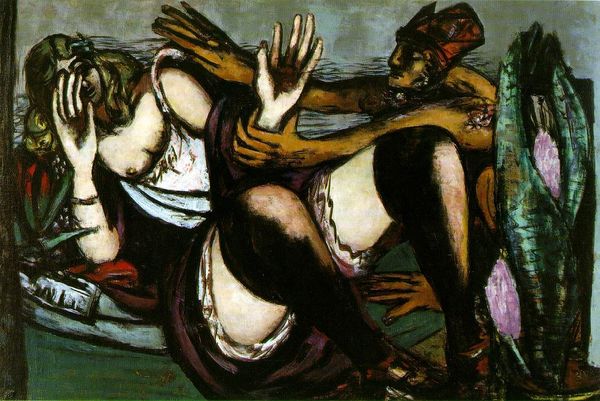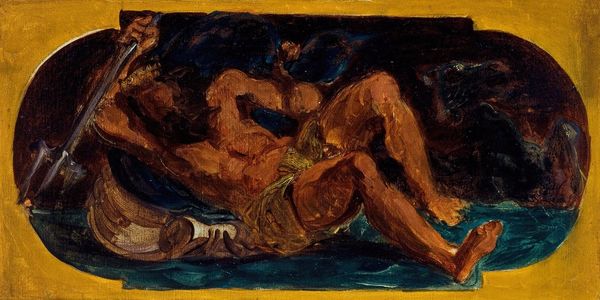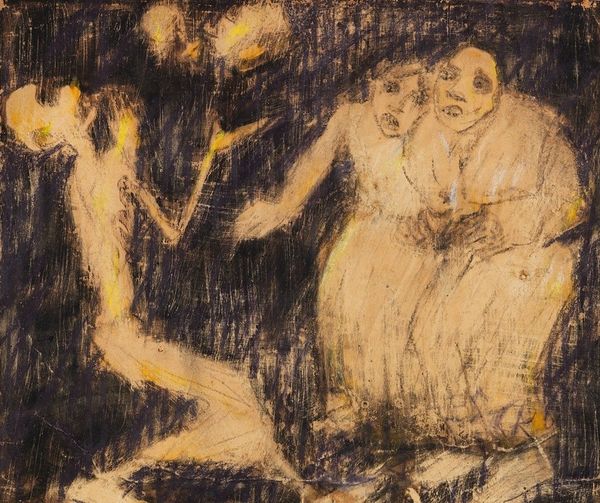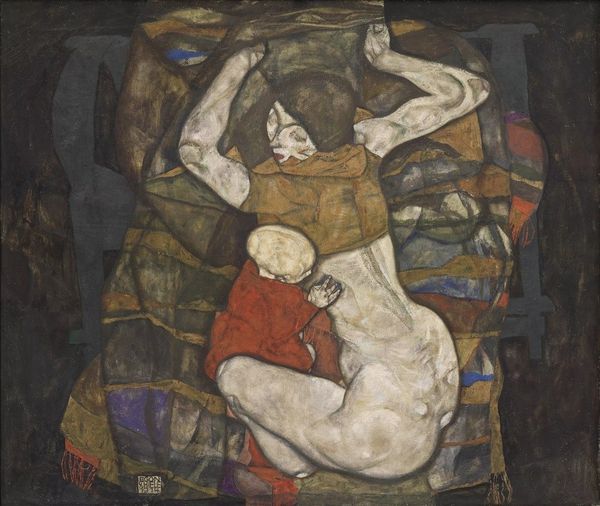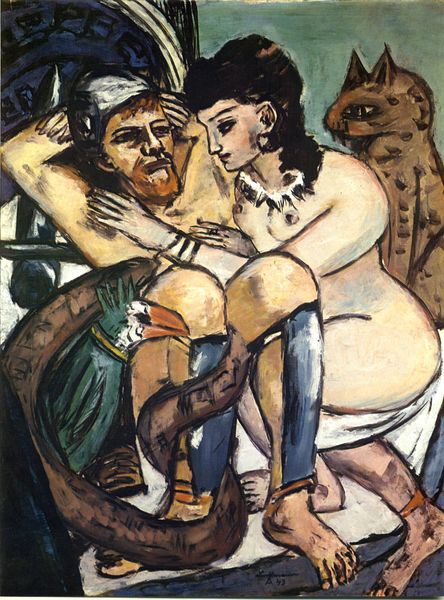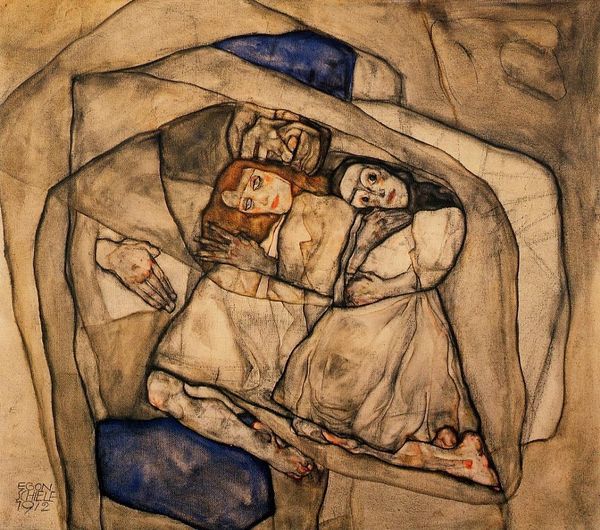
painting, oil-paint
#
portrait
#
mother
#
painting
#
oil-paint
#
german-expressionism
#
figuration
#
oil painting
#
child
#
expressionism
Copyright: Public domain
Editor: Right now, we’re looking at Egon Schiele’s 1914 oil painting, "Blind Mother." It's in a private collection, and something about the ochre palette and angular forms feels immediately unsettling and quite moving. What do you see in this piece? Curator: Unsettling is the perfect word. It feels vulnerable, raw, almost like a memory being dragged from the darkest corners of the mind. Schiele captures a profound sense of intimacy and despair simultaneously, wouldn't you agree? I mean, just look at the way the figures are interwoven. Editor: Yes! They're almost painfully connected, yet somehow isolated within their own experience. What do you make of the title, “Blind Mother?" Curator: That's the core of the work, isn’t it? Is she physically blind? Metaphorically blind to the horrors of the world around her? Or perhaps just consumed by a mother's love, blind to everything but her child? It speaks to the idea of sacrifice. And notice how Schiele renders the forms almost abstractly, conveying not just appearance but also inner turmoil. Editor: That makes me see how the red accents might represent something else beyond the color. Maybe anger or anguish in the expression? I originally thought it was only fabric. Curator: Exactly! Schiele challenges us to confront difficult truths. His portraits are never simple likenesses; they are excavations of the soul. What are you walking away with? Editor: I feel a much deeper sense of the internal conflict within these figures. The whole painting screams emotional complexity in such a dark but intimate palette. Thank you! Curator: The pleasure was all mine. Perhaps the painting shows how beauty comes from unexpected places in sorrow and intimacy.
Comments
No comments
Be the first to comment and join the conversation on the ultimate creative platform.
